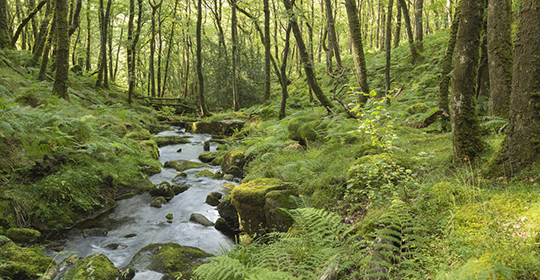Catch Big Fish in Small Streams: 5 Essential Tips for Success
By Debbie Hanson
Mar 21, 2024
Wondering how to catch big fish in small streams? Get tips on finding the best small streams to fish, species to target, what type of habitat to look for
If you think you can’t catch big fish in small streams, you might want to think twice. Rainbow trout, brown trout, and smallmouth bass are three examples of fish species that inhabit small streams in states like Georgia, Tennessee, Pennsylvania, New York, and Wisconsin. Certain small streams offer excellent habitat for larger fish if you know what to look for, how to make your approach, and consider the conditions.
Always Stay Stealthy
Large fish in small streams are extremely cautious, which means a stealthy approach is important if you want to land a giant. Wear clothing in colors that blend in with the natural surroundings and approach very quietly. On sunny days, be extra conscious of where you are casting a shadow.
Fish Small Streams with Less Pressure
Small streams often have considerably less fishing pressure than larger bodies of water. If you want to be successful at fishing streams for big fish, look for water that most anglers won’t take the time to investigate. If you hike to a remote, unpressured stream that is likely to hold big brown trout or rainbow trout, take a friend and a two-way satellite messenger device or personal locator beacon for safety reasons. Sometimes when you do a little more research and travel a little farther, big fish await.

Find Deep Pools or Pockets
Focus on deep pools or pockets within a small stream. Shallow riffles may only hold small trout or smallmouth bass, or maybe no fish at all. Large fish need safe places to hide from predators in a small stream. If they can’t escape from predators by swimming into a deeper pool or under a cut bank, they won’t take up residence in an area. Big fish often hold in the best habitat (near rocky areas, tree roots, logs) and deepest water they can find.
Look for an Abundance of Forage
Whether you plan on targeting trout or bass, another key to success when fishing in a small stream is finding an abundant source of food for larger fish. This means that the stream has a healthy population of forage such as aquatic insects, leeches, crayfish, and baitfish. The more diverse and abundant the food sources are in a small stream, the higher the likelihood of finding large fish in that stream. As trout or bass grow larger, they require more energy to function and often shift from eating primarily insects or crayfish to eating more baitfish.
Factor in the Weather Conditions
Large fish often come out of hiding when streams are higher, the water is off-color, and there are clouds overhead – all factors that make them feel safer. Cloud cover and rain reduce the amount of sunlight, which creates better conditions when targeting large fish in small streams.









